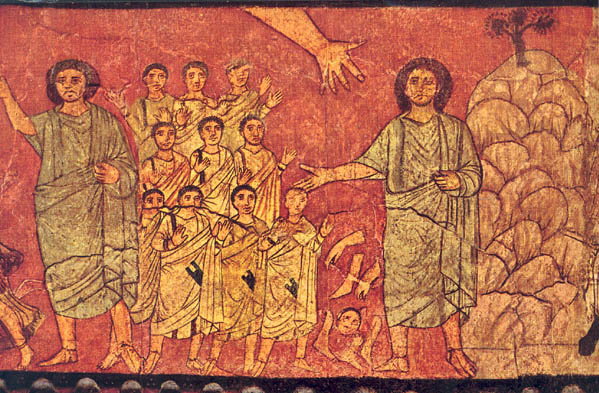Image Details

Nicholas Toll
Ezekiel’s vision (third century A.D.). The hand of God reaching out of the sky toward the prophet Ezekiel is among the earliest visual references to God in Jewish or Christian art. This Old Testament scene is one of many wall paintings in the synagogue at Dura-Europos in Syria.
The artist has evoked Ezekiel’s vision: “The hand of the lord was upon me, and he brought me out by the spirit of the lord, and set me down in the midst of the valley; it was full of bones” (Ezekiel 37:1). Ezekiel wears classical Greek garments reflecting the period of the artist rather than the period of Ezekiel—the white chiton, or tunic, and the himation, or cloak; Ezekiel’s right hand extended in an orator’s gesture, stretches toward figures representing the house of Israel. But Ezekiel’s gaze is not toward them, nor toward the mighty hand above him; nor though his gaze is directed toward us, does he look at us. His eyes have the glazed and unfocused look of the visionary; he is the mouthpiece of the lord.
